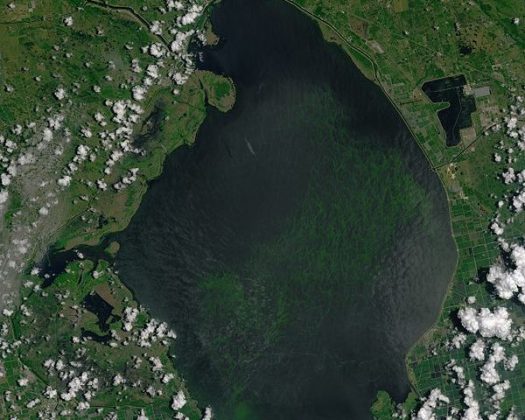On Tuesday, Gov. Ron DeSantis announced $5.2 million in grant funding will be awarded to the South Florida Water Management District (SFWMD) and Florida Atlantic University’s Harbor Branch Oceanographic Institute (HBOI) as part of Florida’s continued efforts to protect water quality and the Sunshine State’s natural resources.
The two grant recipients will be using the funding to implement enhanced nutrient removal technologies, water quality monitoring and data sharing and work to improve the relationship between environmental conditions and nutrient dynamics in Lake Okeechobee. These efforts will result in a better scientific understanding and management of nutrient conditions in Lake Okeechobee.
“Lake Okeechobee continues to be at the center of many discussions surrounding water quality in Florida, and rightfully so,” said DeSantis on Tuesday. “Lake Okeechobee has far-reaching impacts on Florida’s natural resources. The allocation of more than $5 million in grant funding will ensure our state’s environmental leaders can continue enhancing our ability to monitor and protect water quality and marine life for years to come.”
This most recent allocation of grant funding was facilitated through the Department of Environmental Protection’s (DEP) Office of Water Policy and Ecosystem Project’s Innovative Grant Program following recommendations made by DEP’s Blue-Green Algae Task Force (BGATF). These recommendations included an investment in a diverse portfolio of technologies to prevent, detect and address harmful algal blooms in a cost-effective, environmentally safe and scalable fashion.
“As the largest lake in the southeastern United States, Lake Okeechobee serves as a vital component of our ecosystem,” said DEP Sec. Noah Valenstein. “Our state’s ability to support marine life, strengthen aquatic habitats and bolster water quality are all reliant upon our ability to preserve the health of Lake Okeechobee and the recent allocation of grant funding will further support research efforts aimed towards preventing harmful algal blooms.”
Titled the Lake Okeechobee S-191 Basin Surface Runoff Phosphorus Removal Project, the SFWMD will be using $3 million in DEP grant funding to reduce Total Phosphorus (TP) loads in the S-191 Basin, which is located within the Taylor Creek/Nubbin Slough Sub-watershed in the Lake Okeechobee Watershed. The three-year project will utilize a ferrate TP removal system in an effort to help achieve the Total Maximum Daily Load of 105 metric tons per year and associated TP target concentration levels in Lake Okeechobee.
“Governor DeSantis continues to champion investments and actions to protect our water resources including Lake Okeechobee, the liquid heart of the Everglades,” said SFWMD Governing Board Chairman Chauncey Goss. “Innovative technologies coupled with the additional water quality improvements through expanding monitoring and science, expediting restoration projects, and meaningful reforms are doing more for Florida’s water resources than ever before.”
Titled the Harmful Algal Bloom Assessment of Lake Okeechobee (HALO), Florida Atlantic University’s Harbor Branch Oceanographic Institute (FAU’s Harbor Branch) will utilize $2,200,000 in Florida Department of Environmental Protection (DEP) grant funding to assemble an integrative system of state-of-the-art technologies to strengthen harmful algal bloom (HAB) monitoring efforts. Innovative, autonomous monitoring platforms will be used in conjunction with conventional observational, experimental techniques, and modeling approaches to provide the necessary data to improve our overall knowledge of the triggers underlying HAB formation, toxin generation, and bloom senescence.
HALO will include a web-based platform designed by the Gulf of Mexico Coastal Ocean Observing System (GCOOS) for visualizing Lake Okeechobee freshwater HAB bloom intensities and extents, as well as results of environmental characterization and modeling. Overall, the innovative technologies and the knowledge gained during this project will set a foundation for selecting and applying future mitigation technologies, whether of a preventative or active nature, while the HALO system will provide a platform for mitigation efficacy monitoring. The project will also include a human health study designed to better understand the relationships between environmental conditions, cyanotoxin exposure, and human health.
“For more than five decades, scientists from FAU’s Harbor Branch Oceanographic Institute have worked collaboratively with marine science and technology partners as well as state and federal agencies to conduct multidisciplinary research to combat some of our most complex environmental problems such as harmful algal blooms,” said FAU President John Kelly. “We are honored to receive this grant and for the continued support from Governor Ron DeSantis and Secretary Noah Valenstein who share our deep commitment to preserving the health of Lake Okeechobee. Our project, spearheaded by Dr. Jordon Beckler, will implement state-of-the-art monitoring technologies and platforms designed to produce positive environmental, societal and economic outcomes.”























